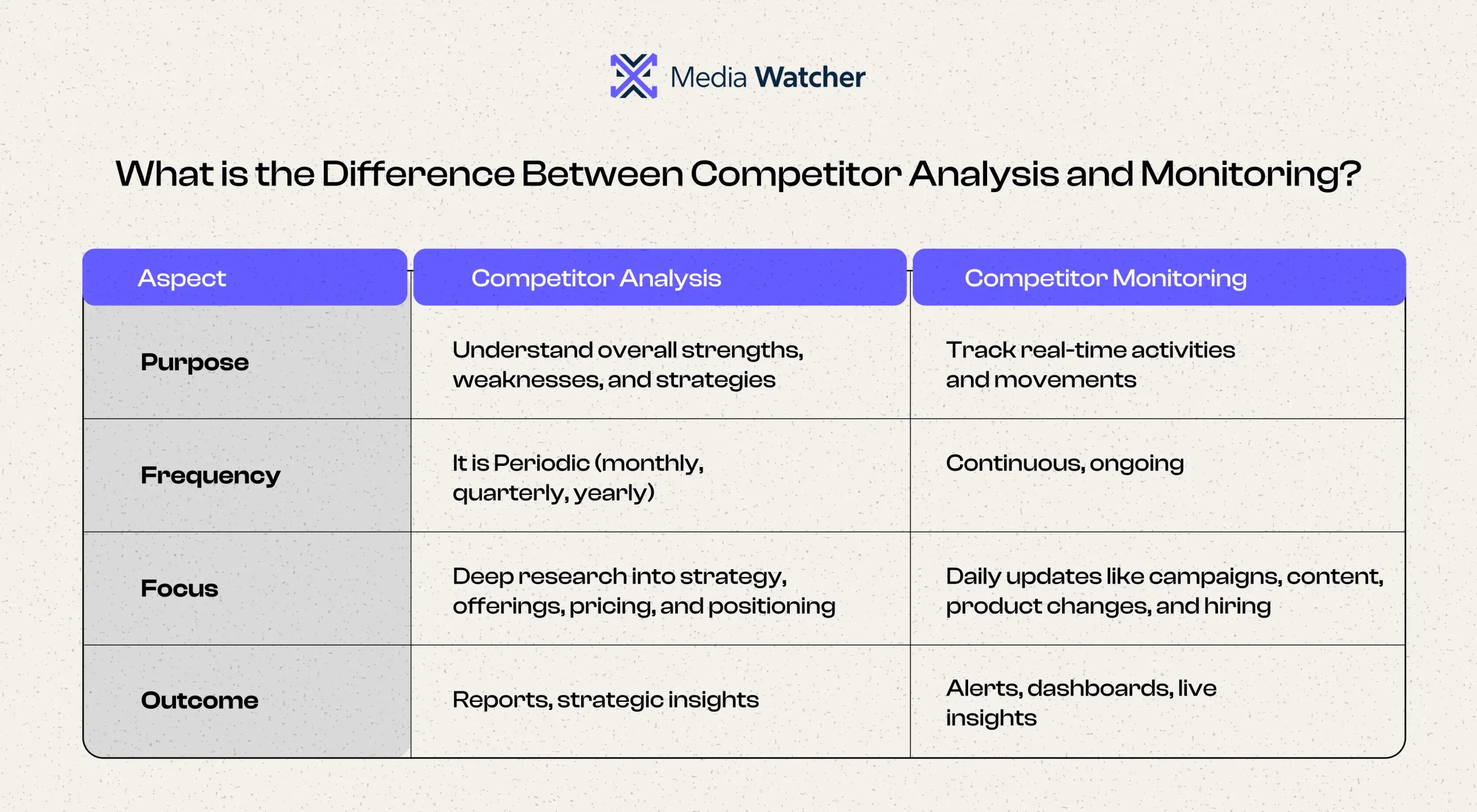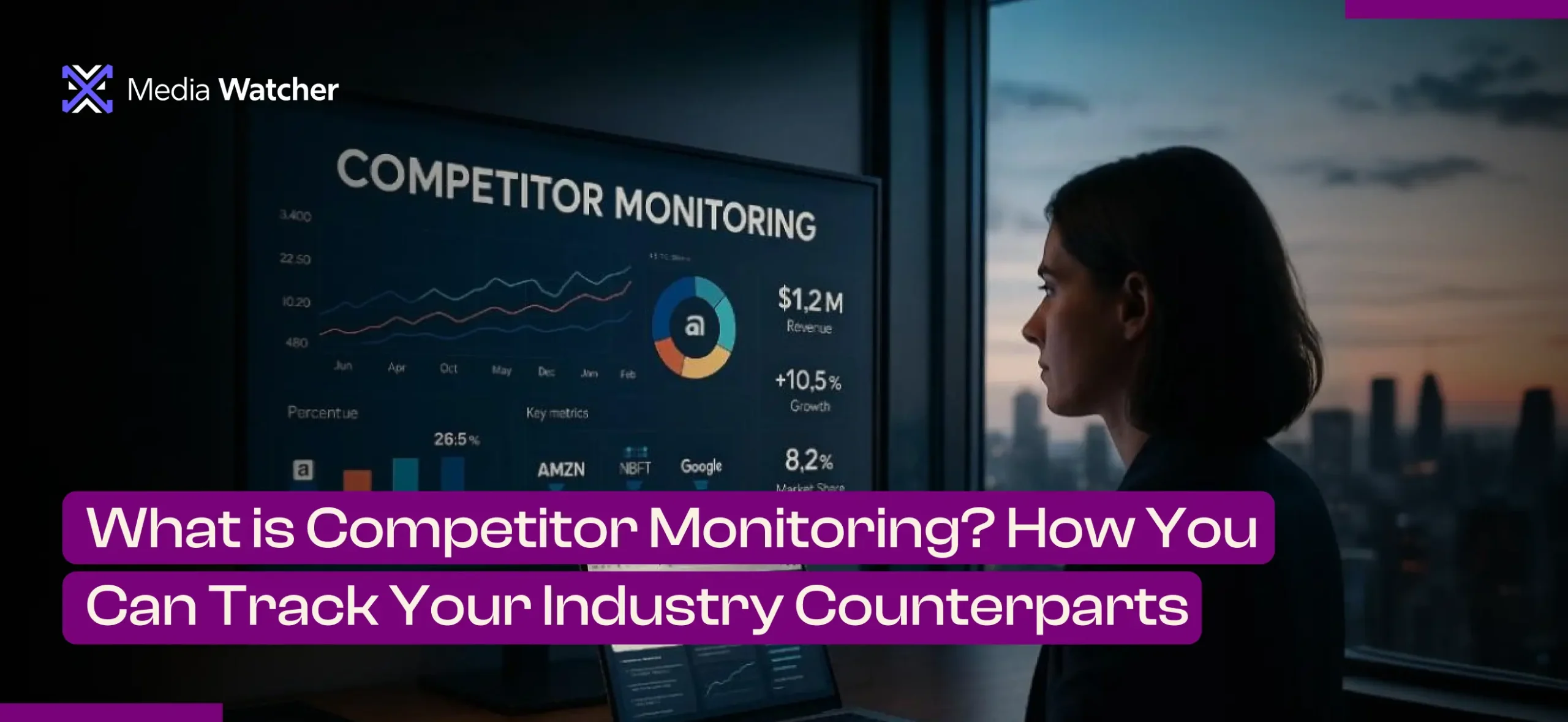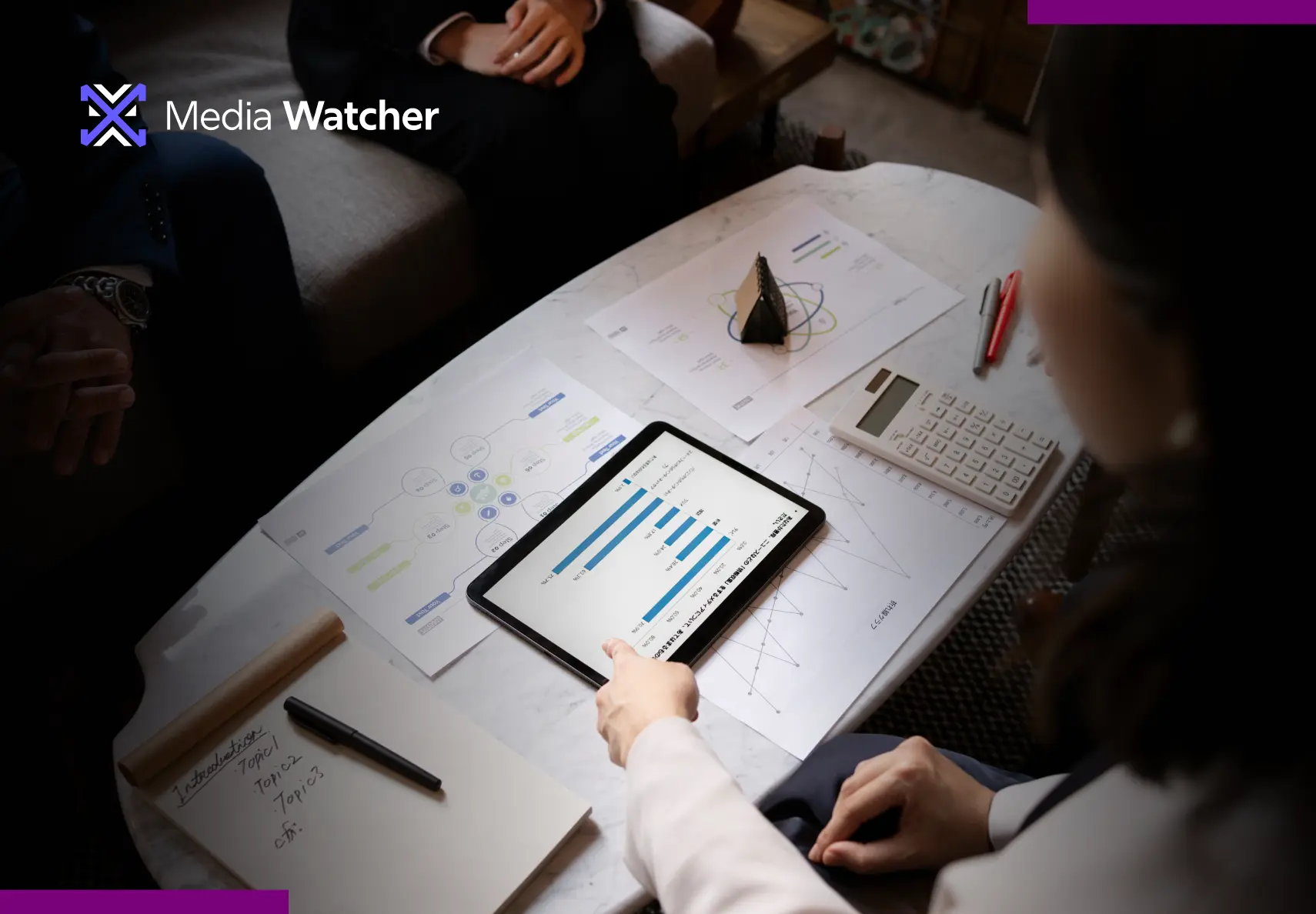“The brands that win aren’t the loudest, they’re the ones paying attention.”
Do you remember the tech layoffs in the US from 2022 to 2023? Amazon, Meta, Twitter, Salesforce, and Google experienced significant workforce shifts, and the news coverage exploded across media outlets.
Other brands were applauded for transparency, while others were mocked and accused of mishandling layoff management.
In such cases, monitoring competitors using media intelligence served as a survival tool for HR and PR teams worldwide.
Companies planning restructuring watched the backlash closely, sentiment heatmaps, journalist framing, employee reactions on Reddit and Blind, and political commentary on regulatory oversight.
Those insights influenced internal memos, announcement timing, communication framing, and even severance strategy.
Competitor monitoring not only indicated what the other companies were doing, but also what they should not do. Let’s break down why competitor monitoring is important and how to do it right, along with the tools and techniques that actually work.
What is Competitor Monitoring?
Consider monitoring competitors as surveillance, but legal, ethical, and way more competent. It’s the process of tracking:
- Media mentions
- Product announcements
- Customer sentiment
- Social conversations
- PR responses
- Partnerships
- Market development and trends
- Influencer associations
- Search trends
This approach is not spying, instead it’s a way of staying informed.
Your competitors in this digital landscape have an all-encompassing narrative that is openly posted and scattered across the news, Reddit, X, TikTok, podcasts, niche forums, regulatory filings, customer complaints, etc.
The brands that want to stay ahead of their competitors must be aware of where they stand and make strategies accordingly. It also involves leveraging competitor monitoring software to track and analyze everything.
Therefore, the businesses that win are simply the ones collecting it first.

Why Automated Competitor Monitoring Has Become a Survival Skill?
Automated competitor monitoring has become a survival skill as markets have never been this fast, and a viral moment can change the sentiment overnight.
Today, brands must respond quickly when competitors launch products, create stories, and engage customers. They can no longer wait until the end of the quarter to take action.
Thus, competitive intelligence monitoring enables you to notice the changes in time, prevent expensive errors, and perform quickly in today’s digital world.
Every bit of information is already public. It just depends on who is watching first. One brand sees noise. Another sees a pattern. The second one wins.
How Competitor Monitoring Actually Works?
Here is a subtle breakdown of how a competitor monitoring approach works for brands:
- They watch media coverage to catch product launches and subtle shifts.
- They track sentiment to detect rising excitement or frustration.
- They monitor social conversations because TikTok and Reddit provide signals about user preferences.
- They track their competitors’ content strategy to see where they’re doubling down.
- They observe hiring trends on LinkedIn to predict new product movements and even expansion plans.
- They study reviews to identify gaps in their offering.
- They track partnerships because collaborations always reveal the upcoming direction.
Suggested Read: A Guide to Competitive Intelligence for Business Market Clarity
The Risks of Not Monitoring Competitors
Let’s be real. If businesses dont track competitors, here’s what they are risking:
| Late Reactions | The shift in public opinion has already occurred before a competitor can build any momentum. Brands are only catching up rather than leading. |
| Blind Spots | A competitor could be experiencing a PR crisis or lawsuits that open up market space for you. If you’re not watching, you miss your window. |
| Misaligned Positioning | You might be promoting the wrong feature while competitors are capitalizing on a more relevant message. |
| Wasted Budget | Imagine launching a campaign right when your competitor drops a massive announcement. Media noise buries your spend. |
| Losing Customer Trust | If your competitor is trending toward transparency, customer care, or innovation, and you’re silent, your customers might migrate without you even noticing. |
How to Monitor Competitors Step-by-Step
Brands think tracking their competitors is the part they most often overcomplicate. So here’s the clean, actionable version.
1. Identify Your Real Competitors
Not everyone in your industry is a competitor. Brands need to identify from the three types, that is, direct, indirect, and aspirational competitors. Therefore, it is important to monitor all in order to make the right decision.
2. Track Their Media Coverage
Most competitors move the media before they appear anywhere else. Brands should keep track of press releases, interviews, news features, product reviews, industry coverage, and coverage of the crisis. If they get it early, then they can take advantage of the narrative.
3. Monitor Customer Sentiment
This is where the main part of the search comes. Real-time sentiment analysis reveals: What people love, hate, expect, and complain about through mentions and hashtags. Moreover, you can also track what your competitor fails to deliver.
As we know, Reddit alone has become a sentiment engine in recent times. Well, if you aren’t listening there, you’re late.
4. Track Social Conversations
Competitors live and die online. Businesses should watch for the following, as these conversations shape public perception faster than official press.
- Viral posts
- Brand hashtags
- Influencer partnerships
- Negative threads
- Product complaints
- Industry memes
- Micro-trends
5. Study Their Content Strategy
It is important to study competitors’ brand perception, including what they post, the formats that work for them, and the topics they own. It reveals a strategic direction. For Example, after Duolingo shifted to TikTok comedic content in 2022, competitor apps like Babbel took seven months to adapt.
Duolingo grew TikTok followers to 10.5 million, while Babbel stalled under 1 million. Monitoring could have played a vital role in saving Babbel millions.
6. Track Their Search Trends
Google Trends and SEO tools reveal the growing and declining interest, new product discovery, seasonal demand, and rising competitor keywords. This information helps shape your campaigns and positioning.
7. Analyze Their Reviews and Feedback
This helps in extracting the best insights. Platforms like Facebook, LinkedIn, Reddit, YouTube, and Tiktok show you the emotional gaps customers expect competitors to solve. If you can solve those gaps first, you win.
But here’s the truth: there is no team that can manually track all this. There are too many platforms, too much data, too many conversations happening simultaneously, and consumer sentiment moves faster than any human can read.
Well, this is where Media Watcher, a competitor monitoring solution, changes the game.
Where Others See Chaos, Media Watcher Sees Strategy
Media Watcher’s media monitoring tool tracks brands across 100,000+ sources in real time, covering 80 languages and 235 regions, including news sites, blogs, podcasts, Reddit threads, YouTube commentary, TikTok mentions, and platform-specific insights.
This further helps the brands in tracking their competitors as well. It doesn’t just pick up mentions, but helps brands read the room.
The tool also monitors brand sentiment analysis, identifies trends, and alerts you when something shifts in your competitor’s narrative.
If your competitor is being praised, criticized, accused, celebrated, questioned, or suddenly trending, Media Watcher, serving as a competitor monitoring platform, can notify you instantly by setting alerts on the dashboard.
If they begin a new influencer push, launch a product quietly, face regulatory scrutiny, or get called out in a viral thread, you see it before it becomes mainstream. It gives you the competitive edge that used to take entire PR teams months to build. Book a demo or contact our team for further details.




